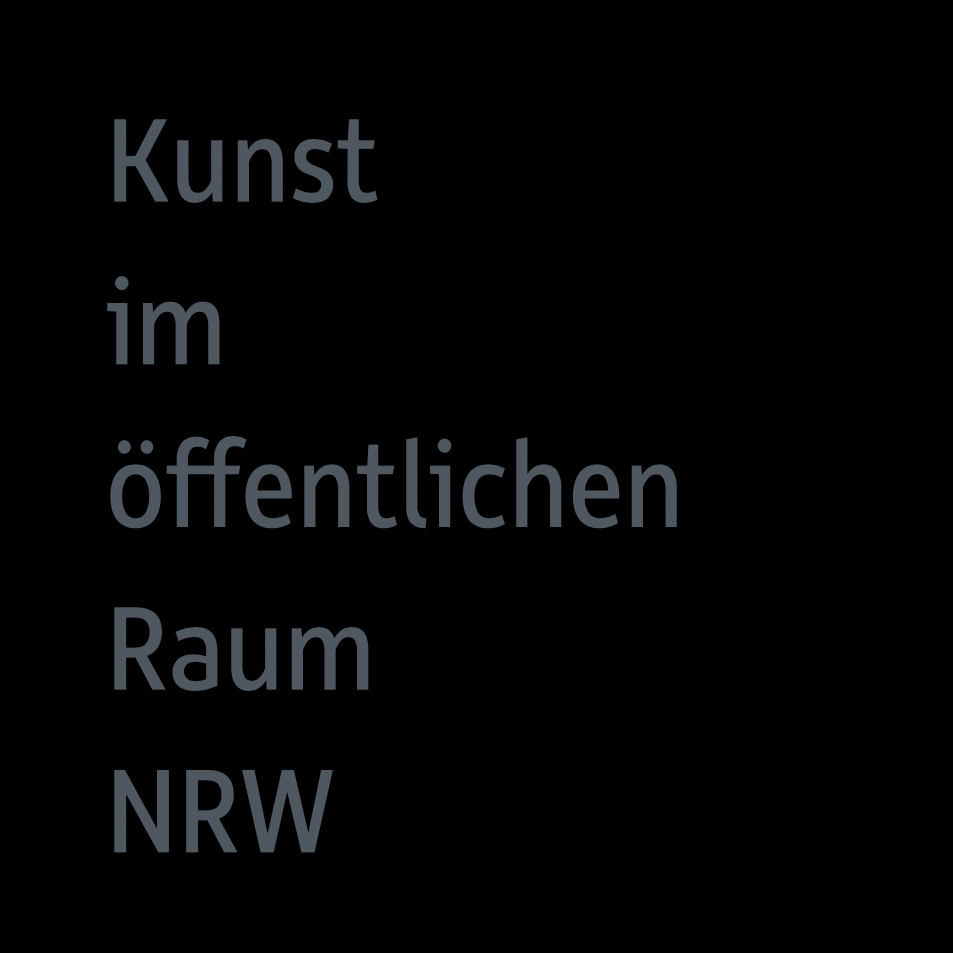Optimus II
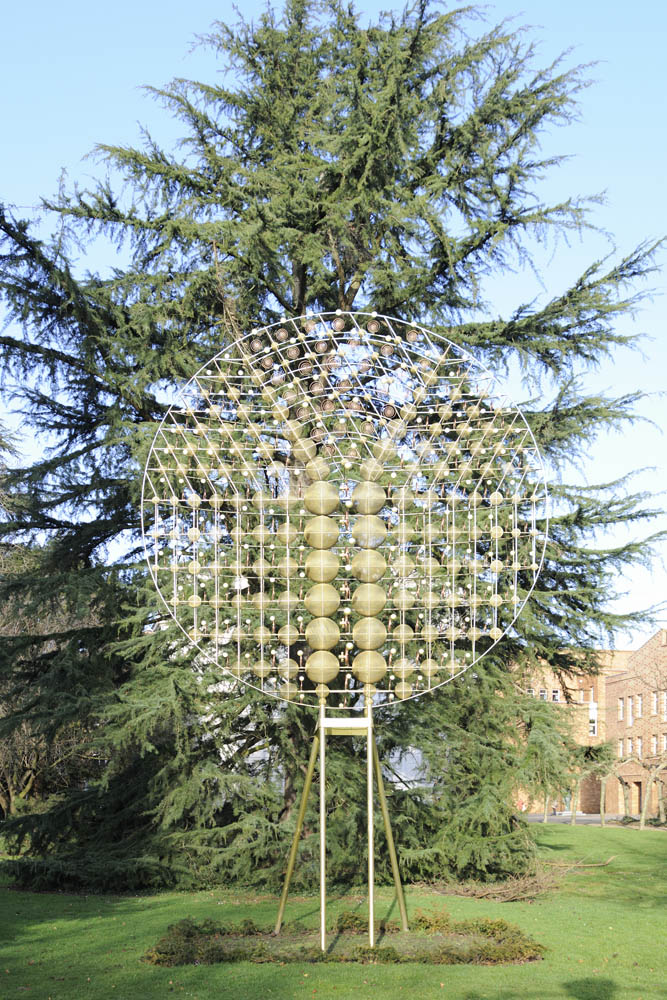
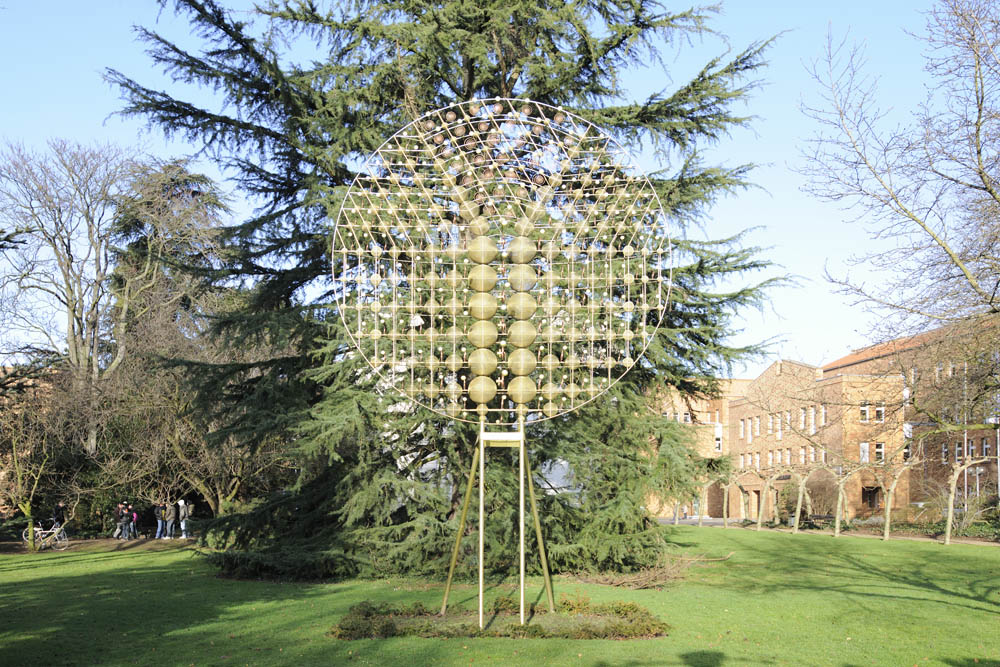

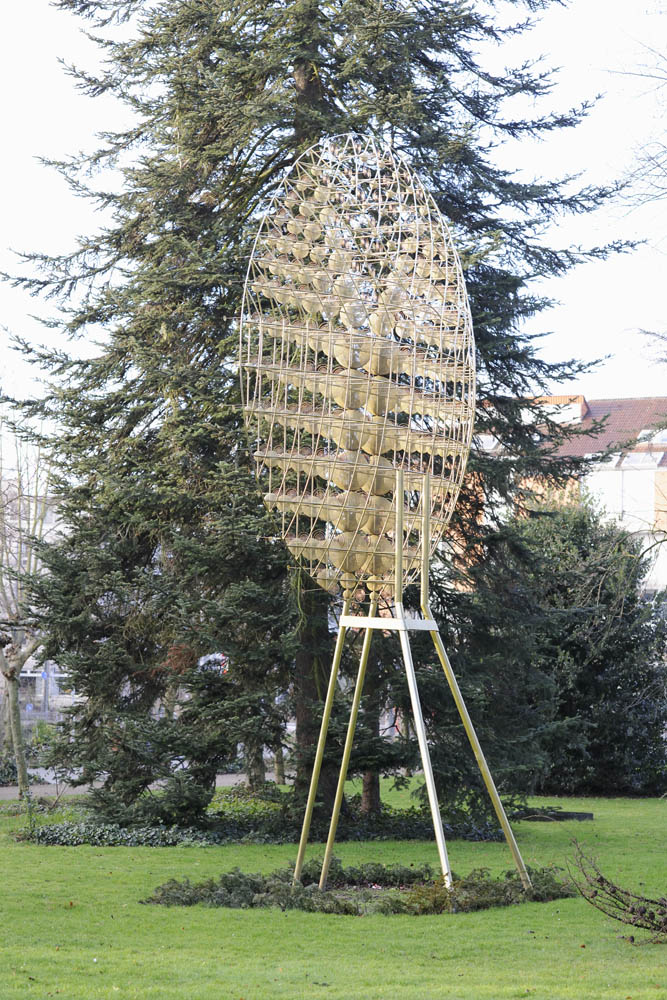
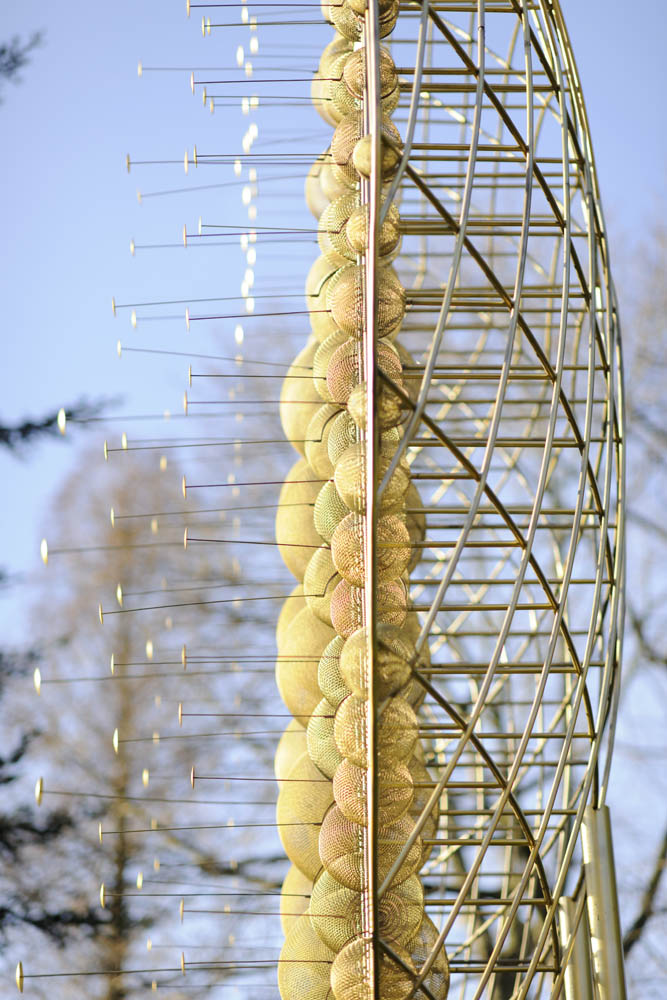
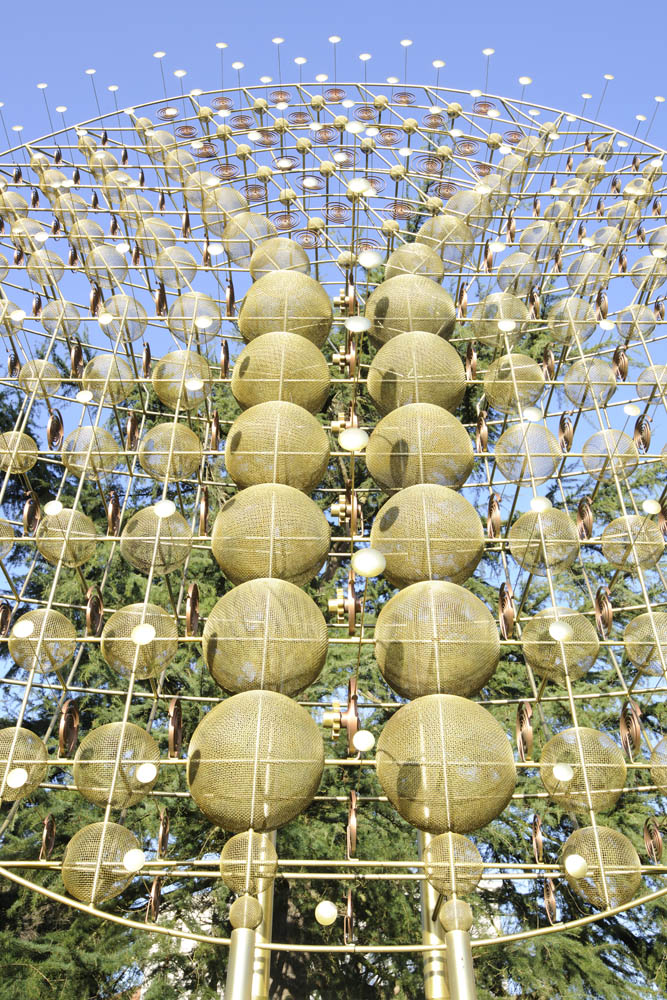
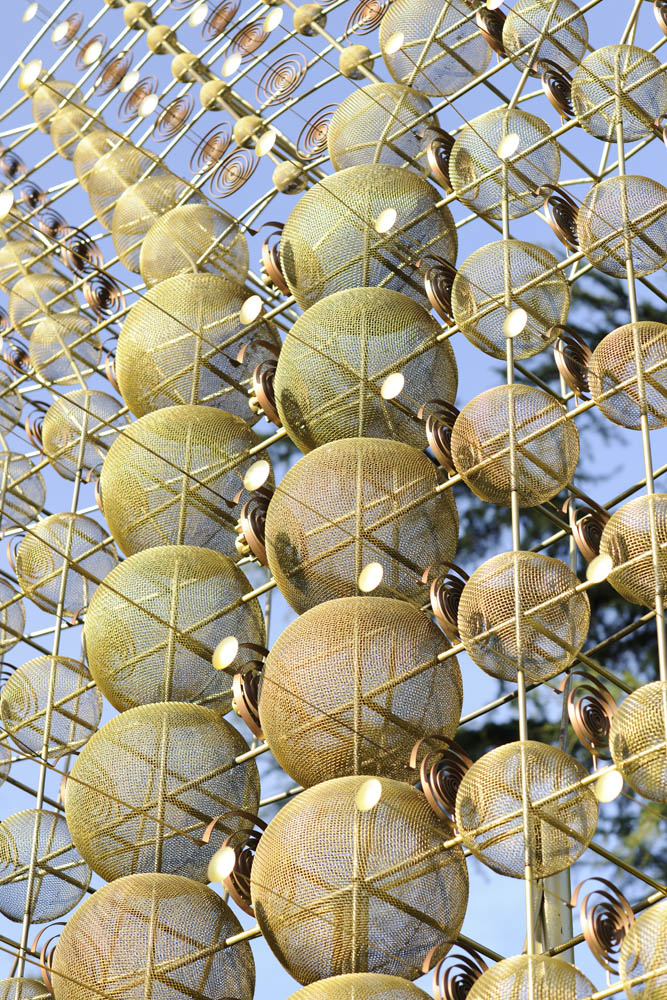
Günter Haese struck out in a new direction with his work in the Skulpturensammlung in Viersen, as his previous works, which he realized alone, were constructed in more manageable sizes.
Of course, this sculpture is not just about enlarging the dimensions of a Haese object, so much as bringing the artistic qualities of the former works into a new situation: the fine and delicate construction made of wire, the interrupted space, the vibrations of its individual elements and their responsiveness to the wind, the light reflecting and interacting with the fixed and moving parts, and the playful depiction of the air-filled space as an animated sphere. Kinetics deprived of mere mechanics – a transformation into an almost organic arbitrariness of movement.
The constructed frame as an organ – hence, the repeated comparisons with antennas and space probes that Haese’s objects evoke. They point to the vastness of space and suggest the possibility of crossing it. At the same time they are cell-like structures, in which – as if through a transparent skin – sequence, order and seclusion of an interior can be experienced as potential mobility in itself. Cell structure and tentacles, feelers and antennas – and simultaneously segmented, serially constructed, and seemingly standardized forms in which movement appears to be one of its possible modes of being, like a sporadic reflex or even as a breath – an infinitely tender sensation.
This subtle aesthetic cannot easily be achieved with altered static conditions and different weight ratios. A number of completely new decisions had to be made. The construction of this sculpture in public space is even more complicated than the model. The actual character of the artwork changed in the process. Are all of Haese’s works now potential models to be executed in another size?
Theoretically, the artist agrees with this notion, but that says nothing for the individual cases. Optimus II is the first in a new environment, in a changed world.
Original German Text: Joachim Peter Kastner, Günter Haese. Optimus II in der Skulpturensammlung Viersen, published by the Verein für Heimatpflege e. V., Viersen 2007, p. 60 f
Additional information: www.publicartwiki.org/wiki/Kategorie:Verzeichnis_Viersen
Günter Haese
← Zur Startseite
Viersen, Rathausmarkt 1 (Park at the Städtische Galerie)
